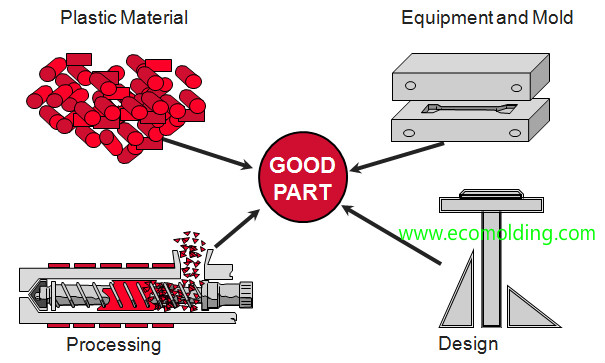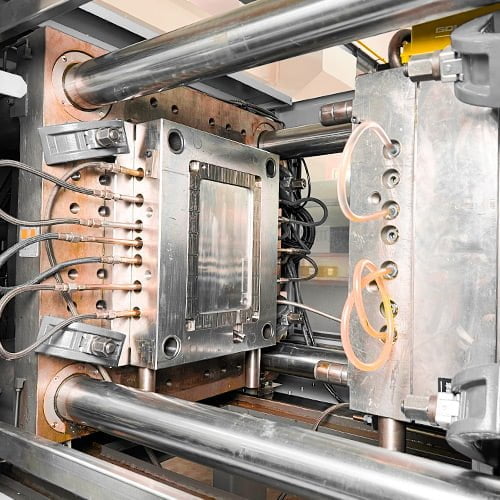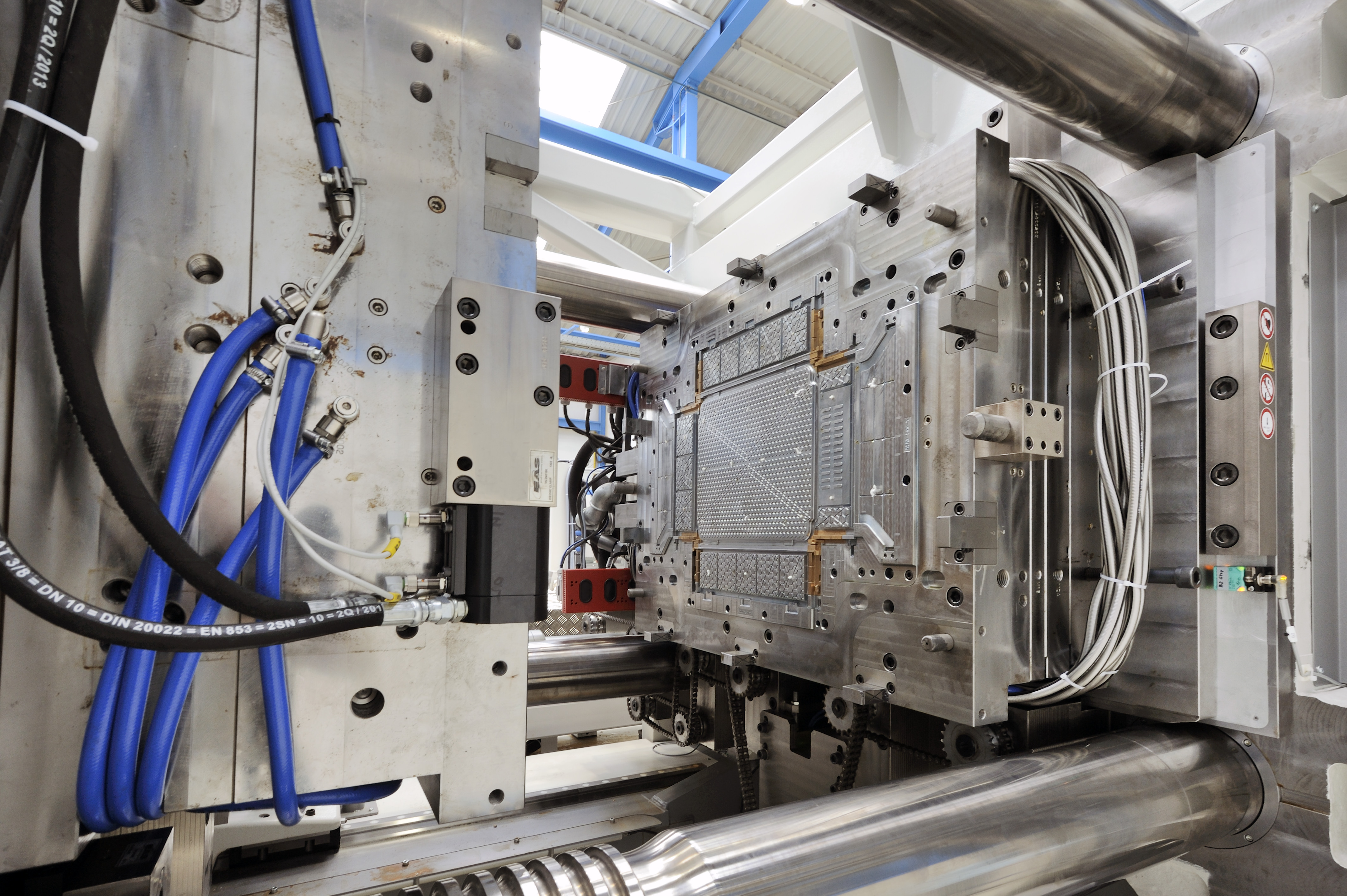The Function of Plastic Injection Molding in Creating Cost-Effective Industrial Components
Comprehending the Basics of Plastic Injection Molding Processes
Plastic injection molding functions as a keystone of modern-day production, providing a methodical strategy to generating intricate components with precision. This process not just encompasses the basic steps of melting and injecting products into molds however also involves a nuanced understanding of numerous influencing factors, such as temperature and pressure. As sectors increasingly require efficiency and quality, the intricacies of this methodology become much more essential. Exploring these necessary aspects can disclose just how even minor changes can lead to substantial enhancements in production outcomes, elevating questions about the possibility for advancement in this well-known procedure.
What Is Plastic Injection Molding?
Plastic injection molding is a widely made use of production process that changes thermosetting and thermoplastic materials right into precise and intricate shapes. This strategy is favored for its ability to generate high volumes of similar components with exceptional precision, making it an essential approach in various markets, including auto, consumer products, and clinical gadgets.
The procedure entails melting the selected plastic product and infusing it right into a mold and mildew under high stress. The mold and mildew, developed to the requirements of the preferred component, permits the liquified plastic to take form as it solidifies and cools. Once the material has solidified, the mold is opened up, and the completed part is expelled.
Plastic injection molding supplies numerous advantages, including lowered waste, consistency in production, and the capability to incorporate detailed layouts that may be challenging with various other manufacturing techniques. Furthermore, it supports a wide range of materials, each supplying distinct residential or commercial properties that can be tailored for particular applications. As markets proceed to introduce, plastic shot molding continues to be at the forefront, making it possible for the advancement of sophisticated products that satisfy progressing customer demands.
The Shot Molding Refine
The shot molding procedure is an innovative technique that includes a number of essential stages to generate premium plastic elements. Plastic pellets are fed into a heated barrel where they are thawed right into a viscous fluid. This molten plastic is then infused under high stress right into a precision-engineered mold, which forms the product into the wanted type.
Once the mold and mildew is filled, the plastic is allowed to solidify and cool, taking the shape of the mold and mildew dental caries. Cooling time is essential, as it impacts the cycle time and the final properties of the shaped component. After sufficient air conditioning, the mold opens, and the ended up component is expelled utilizing ejector pins.

Products Made Use Of in Shot Molding
Various products can be made use of in the shot molding procedure, each offering special properties that cater to specific applications. One of the most typically used materials consist of thermoplastics, thermosetting plastics, and elastomers.

Thermosetting plastics, like epoxy and phenolic materials, undergo a chemical change throughout the healing process, leading to a stiff, inflexible framework. These products are perfect for applications calling for high warm resistance and architectural integrity, commonly made use of in automotive parts and electric insulators.
Elastomers, consisting of silicone and rubber-based materials, give versatility and durability. Their unique buildings make them appropriate for applications that require flexibility, such as gaskets and seals.
In addition, specialized products like bio-based plastics and compounds are obtaining grip for their environmental benefits and improved performance attributes, expanding the scope of shot molding applications in numerous sectors. Understanding the properties of these products is crucial for choosing the appropriate type for details tasks.
Advantages of Injection Molding
Injection molding stands apart as an extremely reliable production procedure that offers various advantages for creating complicated get rid of accuracy. Among the most significant advantages is the ability to create elaborate styles that would certainly be tough or impossible to attain with other methods (Plastic Injection Molding). The procedure permits tight tolerances and comprehensive functions, guaranteeing high-quality components
Additionally, shot molding is recognized for its rapid production capabilities, making it an optimal option for high-volume manufacturing. As soon as the mold is developed, components can be generated swiftly, decreasing preparations and boosting overall efficiency. This efficiency not just decreases production costs however additionally provides an one-upmanship out there.
The versatility of products made use of in injection molding additionally improves its charm. A vast variety of thermoplastics and thermosetting polymers can be used, permitting producers to choose materials that ideal meet their particular requirements, consisting of strength, warm, and versatility resistance.
Additionally, the procedure decreases waste, as excess product can often be recycled and reused. This sustainability element adds to a lowered ecological effect, making shot molding an accountable manufacturing option. Generally, the advantages of injection molding make it a preferred technique for numerous sectors.
Elements Influencing Product Top Quality
While numerous elements can affect product quality in injection molding, understanding these elements is crucial for accomplishing optimal results. Trick aspects consist of product option, refining specifications, and mold and mildew style.
Material selection plays an essential role, as different polymers exhibit unique residential properties that affect flowability, strength, and thermal security. Poor material option can result in defects such as warping or insufficient dental filling.
Handling criteria, consisting of cycle, pressure, and temperature time, have to be meticulously controlled. Variations in these setups can cause variances partially dimensions and surface area coating. For circumstances, exceedingly heats might cause destruction of the polymer, while insufficient pressure can result in brief shots.
Mold layout is equally vital, as it determines the circulation of the molten plastic and the cooling procedure. Poorly designed molds may bring about irregular cooling rates, causing dimensional mistakes and residual stress and anxieties.

Conclusion
In final thought, plastic injection molding functions as an important production procedure that allows the effective production of high-quality elements. Proficiency i thought about this of the injection molding process, including the understanding of materials and the impact of various factors on product quality, is important for achieving optimal results. The benefits of this approach, such as cost-effectiveness and style adaptability, more emphasize its relevance throughout multiple industries, strengthening its standing as a favored option for high-volume manufacturing.
Plastic injection molding offers as a keystone of contemporary production, supplying a methodical approach to generating intricate elements with accuracy.Plastic shot molding provides several benefits, including reduced waste, uniformity in manufacturing, and the ability to incorporate elaborate designs that might be challenging with look at these guys various other making methods (Plastic Injection Molding). As sectors continue to introduce, plastic shot molding stays at the forefront, enabling the advancement of sophisticated items that meet progressing consumer needs
The shot molding process is an innovative technique that entails numerous crucial stages to create top quality plastic parts.In conclusion, plastic injection molding serves as an essential production process that enables the effective production of top notch elements.